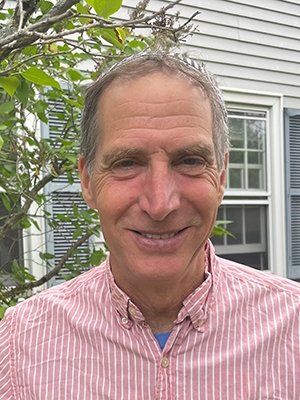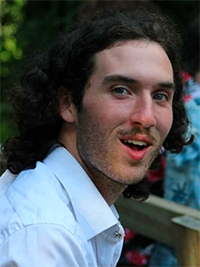Hillel Hayom 2023


Time to be Fertile
Yitzhak Nates, Associate Chaplain, Rabbi
Sunday, August 28, was marked with shofar blasts around the world. What was the occasion?
It was the first day of the last month of the Jewish year, Elul. It generally falls in August or September. What we do in Elul—and the shofar helps remind us—is turn inward. In our rather extroverted society, we actually give ourselves the whole month—40 days, not just the 10 days between Rosh HaShanha and Yom Kippur—to do our inner work.
Rosh HaShanha, we say, marks the world’s birthday. We celebrate life itself. Many of us gather to hear the shofar, to be shaken from our normal states. Apples and honey are there to energize us and remind us how sweet life can be.
Come Yom Kippur, our tradition makes clear, we prepare ourselves for the atonement that is done for/to us. In English, we don’t have a single word to capture the enormity of this cleansing. We do have a word in Hebrew that captures the work we need to do, to prepare ourselves so that Spirit can find a place within us and overlay upon us this grace-filled change. The Hebrew word I refer to is Teshuvah. It means to turn, or return, to release. That’s what we aim to do during our days of awe—to turn ourselves into a fertile patch, ready to have the “at-one-ment” rain upon us.
Hillel Hayom this year will continue to be published digitally. Think of it as our blog on Jewish life at Midd. We are currently planning to Zoom our services, and you can find the whole schedule at our High Holidays website, including information about accessing the Zoom closer to the event.
May this year be filled with connection and blessing. We happily welcome the entire student body to campus!
Shana Tova u’Metukah.
Rabbi Yitz (filling in for Rabbi Danielle, who is on sabbatical in Jerusalem!)
So, for one morning, or one evening—our higher selves lead us to some synagogue or, these days, perhaps to some lovely grove outdoors, where we are offered by the Jewish community (it need not be your community) the opportunity to simply slow down.
We take half a day to go to synagogue, to slow down, to know we could, if we chose to, do this (life) differently.

Spirituality
Joshua Glucksman ’25
I have a pretty classic “Dayenu story.”
I got serious about climate change in high school. I joined all of the mainstream secular climate movements—Sunrise, Fridays for Future, local green groups—you name it, I was there. Then, after two years of being really involved, a pileup of failed activism tasks (a lost election campaign, a big oil spill in my area) basically broke me. I became “burned out,” a term that is becoming increasingly used for a lot of my friends who used to be too involved in climate change and have since given up.
For whatever reason, fate or just pure luck, I ended up tired and frustrated in Jerusalem in 2020. Perfect place to connect back with my Judaism, right? Slowly, after heavily dialing back political action and volunteer work, I decided to explore my peoplehood. I went to Yad Vashem, Israel’s official memorial to the victims of the Holocaust, and, in the database there, was able to find out more about my ancestors and their heavy commitment to leading observant Jewish lives. I met family members I had never heard of living in a completely different world than me. My fairly secular upbringing confronted a completely new side of my roots and—frankly—I fell in love with the whole picture.
Fast forward through two more years of spiritual growth learning Hebrew, Torah, and liturgy, and I was ready to get back into the fold of climate action. I started asking around about “Jewish climate stuff” and Hillel Rabbi Danielle Stillman pointed me in the direction of Dayenu: a Jewish Call to Climate Action. Dayenu is an organization that wants to mobilize the American Jewish community to fight climate change and do so while deeply rooted in our tradition.
Here is one small example of a text study given by Dayenu’s Rabbi Shoshana Friedman. She uses an excerpt of the Sh’ma (a central Jewish prayer said twice a day) from Deuteronomy 11, where we are told if we act well and fulfill G-d’s commandments, we will be rewarded with rain on our crops. Conversely, if we sin, the good land will perish and we will not be able to eat. In essence, we pray every day with a worldview where the material conditions are changed by our good or bad actions.
While this portrayal of G-d is not everyone’s cup of tea, it poses an interesting question of whether or not the world works in this way. Aren’t the evil deeds of (a surprisingly small number of) humans leading to climate conditions that will soon be producing much less food on much worse soil? Granted, maybe there is no middleman in the sky arbitrating, and perhaps it is explainable changes in greenhouse gas concentrations in the atmosphere that can account for this. Yet our tradition has an uncanny way of arguing (thousands of years ago, too) the radical notion that human actions change our climate for good or bad.
From the Torah, too, we know all about the evil actions of mankind that have resulted in climate changes (look to the stories of Noah and Lot). We are also given clear answers on how to make the world a better place: doing G-d’s commandments, a principal one of which is the study of Torah. The question then must be asked: How does the study of Torah affect our material reality? Surely, there are commandments that we could lean in on that are much more “action based.” I would be hard pressed to make a metaphysical claim that the study of Torah in and of itself will change our reality. I do believe, nevertheless, and have seen with my own eyes, that the power of the study of Torah can change people. If the effect of reading an important philosophical text is to make more engaged citizens, why, then, does it have to be the Torah—or any religious work, for that matter?
Middlebury student Connor Wertz ’22 wrote his senior thesis on the religious ritual practices and ideologies that have been a part of religious and secular activist groups. He studied early religious-based social justice movements and compared them with contemporary movements like Sunrise. In essence, groups like Sunrise are inadvertently carrying religious motifs (collective liberation, fighting off apocalypse) and ritual practices (storytelling and singing). He personally concludes that groups that lean into these practices “cultivate stronger community values, avoid chronic burnout, and harness a communal motivational power” (Wertz, 2022, 142). Unlike Sunrise, Dayenu draws explicitly from our tradition, and Connor’s research has really helped me understand why climate Torah in particular can be so revolutionary for Jewish climate activists.
To be spiritual in 2022 on the Middlebury campus, especially for activists, is increasingly looking like this. To be invested in mitigating and solving crises, especially those that are heavily centered around “beating the clock” narratives, is an easy way to set oneself up for failure and burnout. However, being rooted in ancient wisdom and having some pretty compelling answers for solutions to the existential crises of the day is a powerful antidote.
Joshua Glucksman ’25 is a rising sophomore at Middlebury College. In addition to being involved in Dayenu outside of school, he is involved in Hillel, Chabad, J Street U, and the Interfaith House on campus. He is studying climate change and Hebrew and Arabic at the College. In addition to finding strength from Judaism, he loves being active (volleyball, basketball, and Quadball, to name a few sports) and singing and reading. Reach him for questions on any of the above or just to say hi at jglucksman@middlebury.edu.
Reflections
Yitzhak Nates, Associate Chaplain, Rabbi
Today, in 2022, we are largely all running around, too fast. One of the significant qualities of our Rosh HaShanah and Yom Kippur is that they healthfully slow us down. I do think this is something wonderfully embedded in the theme of our Jewish fall holidays, something we simply need in order to live healthier, happier, more peaceful lives.
Perhaps you don’t consider yourself too Jewish, or religious, or spiritual? Even in secular terms, this central attribute of Rosh HaShanah and Yom Kippur, slowing us down, offers us a useful, contemplative break from our normal routines. Wonderfully, our Shabbat practices offer us a similar, even more regular, slowing down.
At Rosh HaShanah, we may be led in a meditation—by a rabbi, a cantor, or a lay leader—that involves a boat slowly moving down a river. Along the banks are the past year’s memories, and people. All of them. We may take the time to greet and consider them. At the end we are often given a prompt, along these lines: “Which of these memories and people do you want to take with you in the boat, as you float into next year? Let’s say goodbye to the others.” And, for these five, maybe 10 minutes, we slow down. Note also, we turn inward.
In very few words I describe our custom as a three-step:
- Gather.
- Slow down.
- Turn within.
Our lives are too fast, and filled with too much—too much information; too much stuff; too many decisions—and all of it consumed super quickly.

